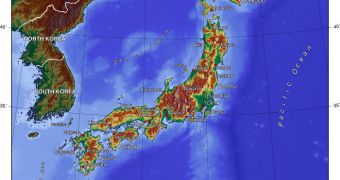In the aftermath of the massive earthquake that struck Japan on March 11, geologists, physicists and planetary scientists have began an ample campaign to determine what went wrong with the tectonic plates that ruptured during the magnitude 9.0 disaster.
Following the 1995 Kobe earthquake, experts were convinced that the next big seismic event will originate south of Japan, at the point where the tectonic plate on which the island is placed collides with the Philippine plate, which is moving north.
However, the tremor originated northeast of Tokyo, in the Japan Trench, an area considered unlikely to be capable of spawning such massive events. Yet, the fault line rupture the event caused seems to indicate otherwise.
Even if emergency responders are still focused on finding and recovering the victims of the tremor, scientists are already hard at work to discover the causes of the tremor and ensuing tsunami.
For more than a week now, they have been investigating the area around the epicenter from the sea, land, air, and also from orbit. The earliest conclusions were that Earth's axis was shifted due to the calamity. The event was prompted as the planet's mass was redistributed by the violent shaking.
But scientists with the Massachusetts Institute of Technology (MIT) say that none of these studies would have been possible without the vast and extensive network of sensors Japan operates.
“It's incredible how instrumented this quake is. With a thousand GPS receivers, you can see there's a lot of detail. Having that data will enable us to understand and statistically forecast earthquakes in the future,” says Bradford Hager.
He holds an appointment as the Cecil and Ida Green professor of Earth sciences in the MIT Department of Earth, Atmospheric and Planetary Sciences (EAPS). The expert adds the Japan is located at a tectonic “crossroads,” which explains its vulnerability to earthquakes.
The North American plate is located to the north, while the enormous Eurasian plate is found down south. The smaller Philippine plate lies next to the Eurasian one, while the massive Pacific plate can be found to the east. All of these plates grind against each other constantly.
According to MIT professor of geology and geophysics Leigh Royden says that, most likely, the March 11 seismic event took place as energy accumulated between the Pacific plate and the southern sliver of the North American Plate was violently released.
“Japan is living on a cauldron of natural disasters, between large quakes, tsunamis and volcanic eruptions. These areas where there's subduction can give rise to mega earthquakes,” the expert says.
“One of the mysteries is what keeps all earthquakes from turning into bigger earthquakes. When a fault ruptures, the local stresses are relieved and get transferred to another fault, so breaking one fault automatically increases the stress levels of other faults,” Hager adds.
And therein lies the problem, experts say. The massive rupture the new tremor caused most likely increased strains in other fault lines, which may therefore snap as well.

 14 DAY TRIAL //
14 DAY TRIAL //